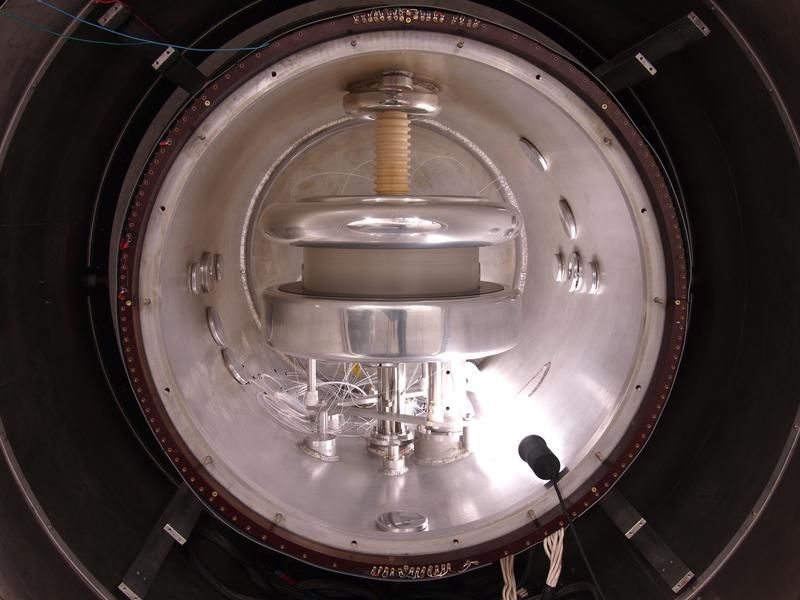New method will enable most accurate neutron measurement yet
Researchers in an international collaboration at the Paul Scherrer Institute (PSI) have successfully developed a new experimental method to determine a fundamental property of the neutron. Neutrons are parts of atomic nuclei, and thus key building blocks in the matter that surrounds us. Although they are so omnipresent, some of their properties still have not been understood adequately – including the neutron’s so-called electric dipole moment. The dipole moment has far-reaching consequences for our understanding of the universe: it might help explain why considerably more matter than antimatter was formed during the Big Bang.
Philipp Schmidt-Wellenburg from PSI and his colleagues devised the co-called spin-echo method to measure slow, freely moving neutrons. Consequently, they have created a new, non-destructive imaging technique for the high-precision measurement of neutron velocity.

View of the spectrometer which measures the neutron electric dipole moment.
PSI/Zema Chowdhuri
Compensating any disturbance for minutes at a time
Schmidt-Wellenburg uses the analogy of a race over unknown terrain to explain the method’s basic principle: “We send neutrons – our ‘runners’ – off with a kind of starting shot. After a certain time, we turn them around with a second signal.” All the neutrons then return to the starting point like an echo. The different time delay at which the individual neutrons cross the finish line tells the researchers something about the nature of the space they each “ran” through: “Similarly, in a group of equally sporty runners, if one made it back later than the rest, it would suggest that there were more obstacles on their course.”
In principle, the spin-echo method is nothing new. In medicine, it has been used for decades in magnetic resonance imaging for tissue and organs. The difference and thus the main challenge with the new method: the neutrons used here are extremely slow and observed for minutes at a time. Such slow neutrons are also dubbed ultra-cold neutrons. Using them, however, means that all the experimental framework conditions need to be kept extremely stable for comparatively long periods of several minutes. Just to illustrate the degree of precision involved in the experiment: “We have to balance out even tiny changes in the magnetic field, which can even come about if a lorry drives past on the nearby road, for instance,” explains Schmidt-Wellenburg.
Measurements with the new method are already underway
All this is necessary to determine the neutron’s electric dipole moment with greater precision than ever. The last experiment to measure this factor to date was published in 2006. However, the result from back then is still too unprecise to draw any conclusions regarding the origins of the universe from it. Since then, there has been a lack of methods for a more accurate measurement. “Now we’ve plugged this gap with our adapted spin-echo method for ultra-cold neutrons,” says Schmidt-Wellenburg.
The new spin-echo method with ultra-cold neutrons can also be used for other fundamental experiments, such as measuring the lifespan of neutrons more accurately. “I dare say that our new method will be used in many experiments with ultra-cold neutrons in the next twenty years,” ventures Schmidt-Wellenburg.
Original publication
S. Afach et al.; "Observation of gravitationally induced vertical striation of polarized ultracold neutrons by spin-echo spectroscopy"; Phys. Rew. Lett.; 2015
Original publication
S. Afach et al.; "Observation of gravitationally induced vertical striation of polarized ultracold neutrons by spin-echo spectroscopy"; Phys. Rew. Lett.; 2015
Organizations
Other news from the department science

Get the analytics and lab tech industry in your inbox
From now on, don't miss a thing: Our newsletter for analytics and lab technology brings you up to date every Tuesday. The latest industry news, product highlights and innovations - compact and easy to understand in your inbox. Researched by us so you don't have to.





















































